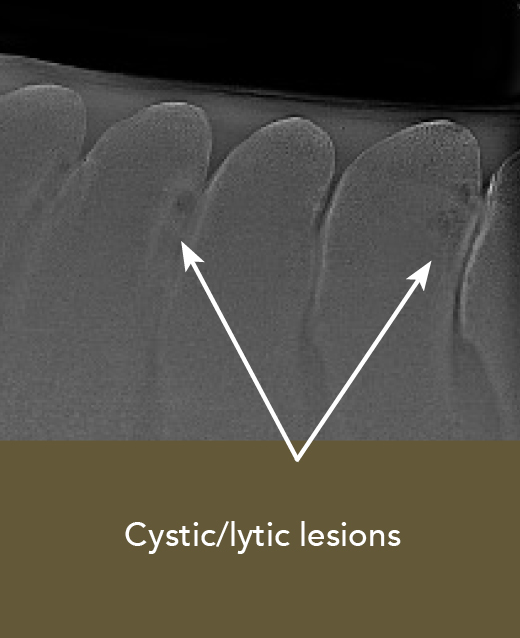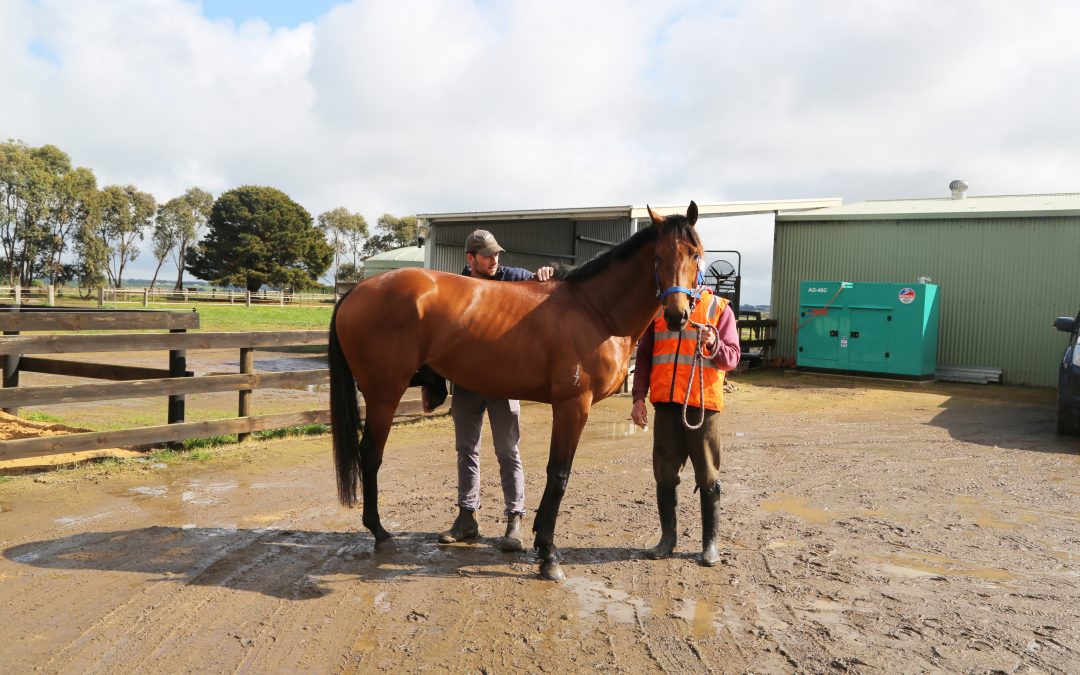Back pain is a common complaint we see in our practice. This problem, although typically associated with performance horses, is becoming more prevalent or perhaps more readily identified by our racing clients also. Back pain, and in particular kissing spine is a confusing and frustrating disease for both owner and veterinarians to diagnose and treat.

Horses with back pain can present in a number of ways; poor performance, poor behaviour under saddle, pain on palpation of back (noted during saddling or grooming), or mechanical issues including cross gaiting in the canter. The first question when assessing these horses is always, is the pain spinal, muscular, referred from a hind limb lameness or discomfort due to gear fit or ridder style. Palpation of the top line muscles and the interspinous processes is conducted to try and isolate the origin of pain. Our vets may also trot up the horse, perform flexion tests, assess the horse on the lunge or under saddle. The work up may vary depending on the history given and the clinical signs horse is presenting with. A phenylbutazone trial may also be suggested, particularly if the horse is showing poor behaviours under saddle, to establish how much of the behaviour can be attributed to pain.

Once it has been established that the origin of the pain is spinal in nature, radiographs are indicated for diagnosis of kissing spine. Radiographic changes suggestive of kissing spine range from narrowing of the interspinous space, sclerosis and lysis to deformation of the spinous process. Interpretation of radiographs needs to occur in conjunction with clinical presentation and pain assessment – some horses have moderate radiographic evidence of kissing spine but are showing no discomfort, while other horses show marked pain with very minor radiographic changes. Treatment plans will change based on the whole clinical picture, not just the radiographs.

There are a few treatment options for kissing spine. One of the most important goals for treating kissing spine is to increase the musculature of the back (ie. Build top line). By increasing top line, there is increased support to the underlying boney structures. This can be achieved through a gymnastic exercise program involving lunging horse in a pessoa, using trot poles and using transition work.
In the acute treatment phase, the horse is often too painful to utilize its top line muscles effectively in order to build them up. As such, pain relief modalities may be implemented. This includes a course of anti-inflammatories, acupuncture or a course of shockwave therapy.


